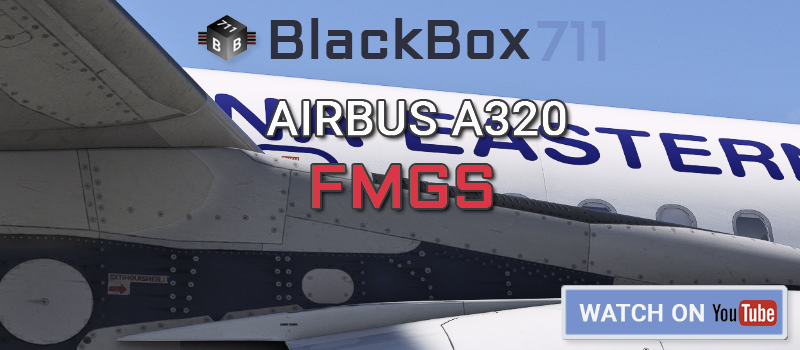FMGS Flight Management Guidance System I
The Flight Management and Guidance System (FMGS) provides guidance from takeoff, through climb, cruise and descent to approach and landing.
FMGS capabilities:
The FMGS provides the following capabilities:
- Pre-flight:
Definition of the required route and prediction of the optimum profile and speeds.
- In flight:
Comparison of position with the desired profile and provision of commands to FD, AP, A/THR to fly track and profile at the required altitude and speed.
The computing systems to perform these functions are contained in cards located in the FMGC (Flight Management and Guidance Computer).
There are 2 identical and interchangeable FMGC units on the aircraft that become FMGC1 or FMGC2 according to their installed position in the avionics compartment. Normaly FMGC1 is associated with MCDU1 (left pilot seat) and FMGC2 with MCDU2 (right pilot seat).
Throughout this manual the components may be referred to separately or collectively, e.g.:
- AP (Autopilot)
- A/THR (Auto thrust)
- FD (Flight Director)
- FG (Flight Guidance)
- FM (Flight Management)
- FMS (Flight Management System)
- FMGC (Flight Management and Guidance Computer)
- FMGS (Flight Management and Guidance System)
FMGS modes of operation
The FMGS has three modes of operation:
- Dual mode (the normal mode)
- Independent mode. Each FMGC being controlled by its associated MCDU.
- Single mode (using one FMGC only)
Overview
Dual Mode
This is the normal mode. The two FMGCs are synchronized: each performs its own computations and exchanges data with the other through a crosstalk bus. One FMGC is the master, the other the slave, so that some data in the slave FMGC comes from the master. All data inserted into any MCDU is transferred to both FMGCs and to all peripherals.
FMGC1 is the Master except when:
- AP2 is engaged singly (normal situation when the RHS pilot is PF). When both APs are engaged for ILS approach, FMGC1 becomes the "master".
- FD2 is ON, FD1 is OFF and both APs disengaged.
For DUAL mode operation both FMGCs should remain precisely synchronized. If this is not possible the FMSs may attempt a resynchronization.
If resynchronization is successful, the input data previously received and used by FMS before the resynchronization remains stored in memory.
Independent Mode
Mode The system selects this degraded mode automatically if it has a major mismatch (database incompatibility, operations program incompatibility. Both FMGCs work independently and are linked only to peripherals on their own sides of the flight deck ("onside' peripherals). When this occurs, "INDEPENDENT OPERATION" appears on the MCDU scratchpad. Each MCDU transmits data it receives only to its onside FMGC, and it affects only the onside EFIS (Electronic Flight Instrument System) and RMP (Radio Management Panel).
Single Mode
The system selects this degraded mode automatically if one FMGC fails. The remaining FMGC drives all the peripherals, so, for example, any entry on one MCDU goes to both MCDUS. When one FMGC fails, the corresponding MCDU displays "OPP FMGC IN PROCESS" in white. The ND on the side with the failed FMGC has to be set to the same range and mode as the other ND. Otherwise the ND displays "SELECT OFFSIDE RNG/MODE" in amber.
More Info
Click next page for more info.
Video Tutorial
In this video I show a Dual FMGS Failure with the Fenix A320.
FSL A320 FNX A320
Warning
ONLY for Flight-Simulation!
